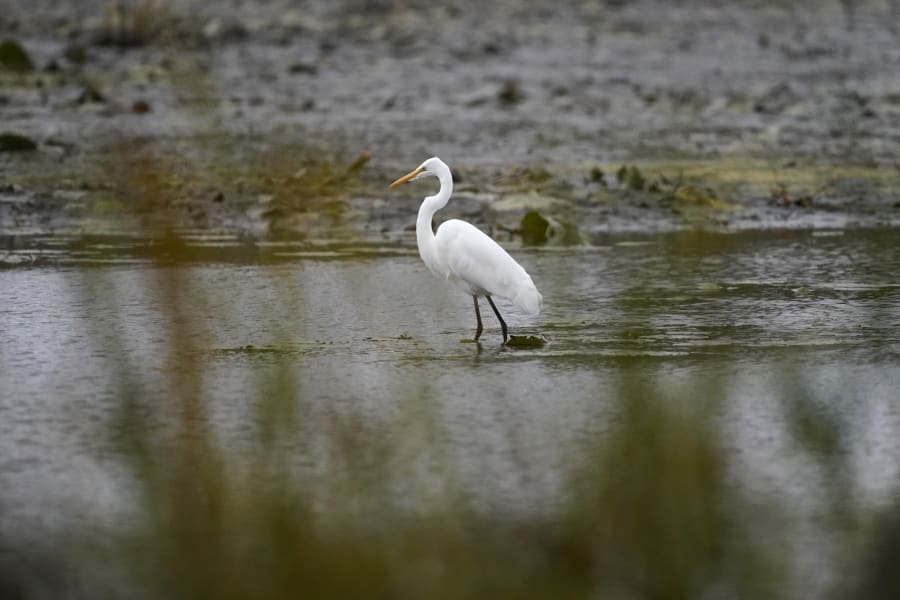Wetlands are distinct ecosystems that are comprised of exactly what they sound like: water and land. They can be found all across the nation, including in Michigan, but not quite in the same quantities as in the past.
Wetlands in Michigan, and across the U.S., have drastically dwindled due to human involvement. These ecosystems -- some of which took thousands of years to develop -- service a wide variety of wildlife, particularly endangered wildlife.
Wetlands in Southeast Michigan specifically have seen the highest rates of destruction in the state, according to Michigan State University’s College of Agriculture and Natural Resources. National and statewide measures have been implemented to help protect these ecosystems, but so much of the wetlands has already been lost, and they’re still shrinking to this day.
What are wetlands?
Wetlands are “areas where water covers the soil, or is present either at or near the surface of the soil all year or for varying periods of time during the year, including during the growing season,” as defined by the U.S. Environmental Protection Agency. These ecosystems support both aquatic and terrestrial species, including specially-adapted plants.
Wetlands are broken up into two primary categories: Coastal wetlands that are present in regions that border oceans or large bodies of water, and inland wetlands, which exist on floodplains along rivers and streams (riparian wetlands), in isolated depressions surrounded by dry land (for example, playas, basins and “potholes”), along the margins of lakes and ponds, and in other low-lying areas where the groundwater intercepts the soil surface or where precipitation sufficiently saturates the soil (vernal pools and bogs).
There are 33 types of wetlands found in Michigan, of which 26 are “considered rare because fewer than 100 intact, functioning examples are known to occur,” according to the Michigan Department of Environment, Great Lakes, and Energy. Of the 26 rare wetland types in Michigan, eight are considered to be at a high risk of extinction, and three are at a very high risk of extinction.
Some wetland types in Michigan include fens, bogs and wet prairies. Some fens, which are are peat-forming wetlands, require up to 10,000 years to form naturally, according to MSU’s CANR.
Learn more about the types of wetlands here.
These wetlands only make up about 5% of land area in the continental U.S., yet are exclusively home to more than one-third of threatened and endangered species, the EPA reports. A total of 43% of threatened and endangered species “depend on wetlands at some point during their life.”
While serving as a habitat for wildlife, wetlands also benefit the environment by reducing the frequency and intensity of inland flooding; protecting shorelines from erosion; recharging ground water systems; slowing runoff; and acting as natural water filtration systems.
Despite the benefits, and the sometimes thousands of years it takes for these ecosystems to form, wetlands were severely reduced in the past, and continue to dwindle today.

When Michigan began losing its wetlands
There were once millions of acres of wetlands in Michigan, officials estimate. It is said that when the first English settlers arrived in Michigan, there were approximately 10.7 million acres of wetlands covering 17% of the state’s land area.
But settlers believed the wetlands were hazardous, and “teeming with disease,” MSU’s CANR says. Due to health concerns, and the fact that wetlands cannot support agriculture, many of these ecosystems were drained or filled, wiping them out altogether.
“According the [Michigan Department of Environmental Quality], over the next 200 years Michigan would see more than 4.2 million acres of wetlands destroyed, an area larger than the states of Delaware and Rhode Island combined,” MSU reports.
Across the state, 71% of coastal wetlands were eliminated, with coastal communities from Bay City down to Monroe hit hardest, reportedly losing more than 80% of pre-settlement wetlands.
“Many contemporary environmental challenges including declining fisheries, water quality concern and flooding are closely tied to this historic decline in wetland acreage,” MSU reports.
Between 1800-2005, reports indicate that 49% of wetland loss was due to development, and 47% was due to agriculture.
Officials say the Southeast Michigan saw the highest rates of wetland destruction in the state.
Learn more about Michigan’s wetlands on EGLE’s website here.
Statewide and nationwide wetland protections were enacted in the 1970s, which reportedly helped to slow wetland destruction -- though some developers continue to target natural wetlands. However, reports show that emerging issues like climate change are now posing threats to the ecosystems.
Metro Detroit wetland loss
Only 10% of Southeast Michigan’s wild wetlands still exist today.
The interactive graphic below allows you to click on a local county to learn more about their existing wetland acreage and overall wetland loss.



